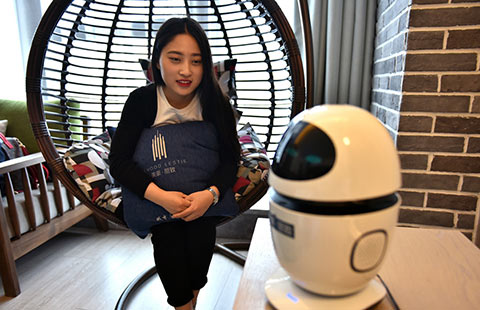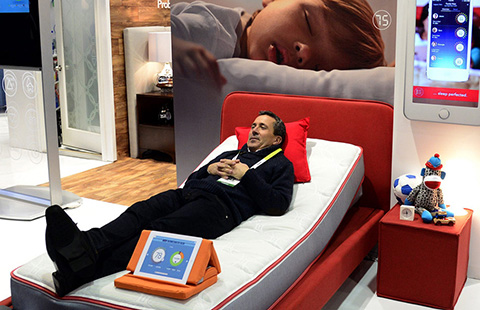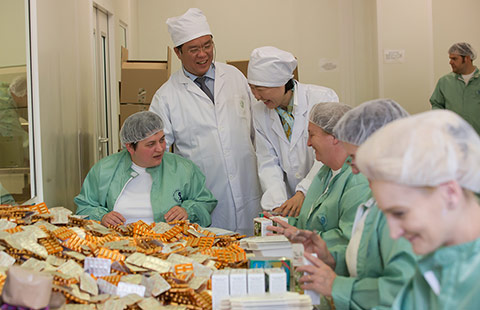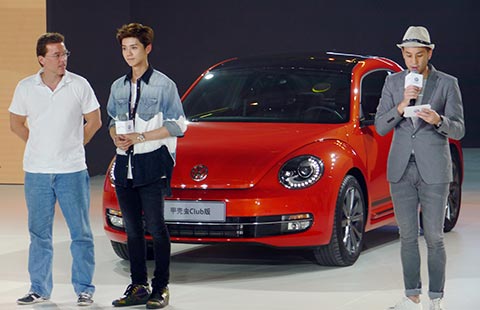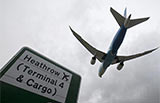Siemens gets lowdown on getting smart
By Meng Jing (China Daily) Updated: 2012-11-09 15:46Industrial giant goes down-market to up success
In the winter of 2010, when Siemens' global research and development team was busy working in Berlin on the fourth generation of protective relays, with new features, better technology and a higher price tag, the company's China team was moving in the opposite direction.
By cutting functions that Chinese customers didn't need in the electromechanical power system safety device and adding those they did, the 30 researchers at Siemens China produced their first "In China, for China" protective relay to market in April, and priced it about 40 percent cheaper than the global version.
|
 Arding Hsu, head of corporate technology with Siemens China, says there is a better chance of the company becoming a game changer if it can better understand the needs of Chinese customers. [Photo/China Daily] |
This seeming downgrade in Siemens China's innovation is not an exception. Rather, it is part of a trend to innovate SMART products - simple, maintenance-friendly, affordable, reliable and timely to market - a major move designed to help the German conglomerate tap the middle and lower-end markets in emerging economies. And China is Siemens' top target market.
"Siemens has achieved great performance in developed markets, such as Germany and the United States, our top two markets in the world, but there is still a lot of room for growth in emerging markets," says Kenneth Hsu, vice-president of Siemens China, who believes SMART innovation is the way to gain more market share in China.
The majority of Siemens' products are made in line with a one-fits-all strategy to meet the needs of many countries.
The traditional innovation process leads to high-end, feature-rich products with time-consuming R&D and a high maintenance cost, if products need to go back to the company's headquarters in Germany for repair.
|
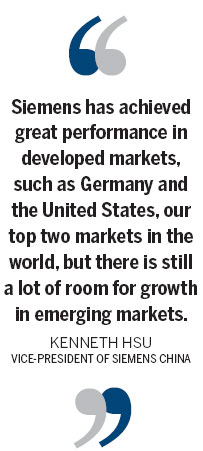 |
So when Arding Hsu took over as head of corporate technology with Siemens China in late 2004, his first instinct was that Siemens' innovation in China could never follow the lead taken in the West.
"There is no country in the world that has as many diversified demands as China," he says. "As long as we can better understand the needs of Chinese customers, there is a better chance of us becoming the game changer in the market."
One of the major inspirations behind his SMART innovation strategy is a simple music box his wife has been using to learn how to sing.
"In the US, people usually use iTunes to download music and they also need to buy a specially made speaker for their iPod, which can cost nearly 2,000 yuan ($320; 250 euros), if they want to hear the music out loud.
"But in China, there is a music box, which is a speaker for around 90 yuan. You can simply fill your memory stick with songs and plug it into the music box, which is not only simple but a lot cheaper."
Moving down-market is important for Siemens to tap into the price-sensitive emerging markets and Kenneth Hsu says there is a lot room in China's mid-to-lower end market for Siemens to develop.
The strategy is especially important for Siemens at present. The company reported "continuous revenue growth in a more challenging market" in its Q3 financial report in July.
The report highlights indicators that show the weakness of the macro global economy, in particular across Europe. The European market is traditionally a key market for Siemens but the company sees "orders substantially below prior years", according to the report.
- Qualcomm says it's here to stay in China
- Belt and Road Initiative connects Chinese capabilities with UK expertise
- New Third Board confirms two-way division
- China's wealth management sector 'should go more global'
- Dell has big ideas for cloud computing in China
- Miracle of WeChat takes hold of tech-savvy news gatherers
- Chinese companies buy into Italian media rights group
- Buffer time given on taxing imported goods sold online


